10 things you probably didn’t know about making maple syrup (Recipe: Maple Sausage Patties)
We’ve been waiting for the sap to start running so we can continue to make maple syrup. And waiting. And waiting some more.
The ideal conditions for sap collection is above freezing temperatures during day, and below freezing at night. Unfortunately, it’s been consistently so dang cold that nothing has really happened. Then we had one glorious day with full buckets, and now it has been consistently above freezing – so no more sap. Sheesh.
Since we can’t elaborate further on our personal progress, I’ll share a few particulars I’ve recently gleaned about making maple syrup and then add in a killer recipe for your Easter brunch to boot. Ready?
1. In my last post, I mentioned that the tapping process introduces a small wound to the tree, which will eventually scar over – so you don’t want to tap your trees too early. To avoid the reduction in flow from the tree’s natural scarring process, some producers will “dope” their taps. Although this would be crazy diluted in the final product, it’s bad for the tree and no one wants to eat that dope anyways, and organic producers don’t do this.
2. Organic producers can’t tap a tree that is smaller than 9 inches in diameter. It’s bad for the tree to do so.
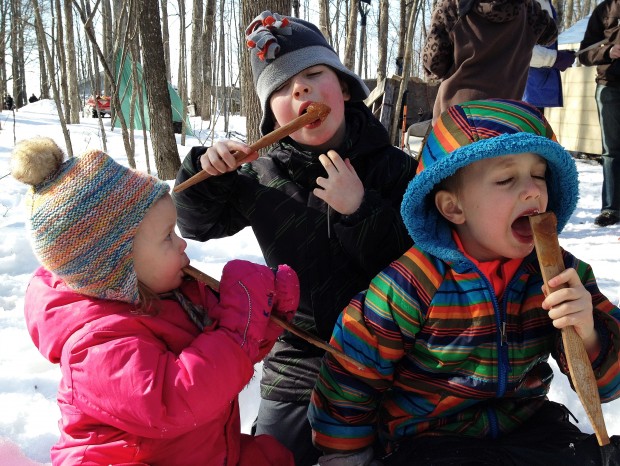
3. Anyone who makes candies knows that when you boil sugar, you risk crystallizing your sugar. The same applies for sap, and eventually, the boiling pans get rock-hard maple crystals on them that need to be removed. Organic producers use Sodium Bicarbonate (old method) or very strong vinegar (newer method) with lots of rinsing to remove these rocks, which takes more time than other kinds of acids.
4. It takes a lot of energy to boil the sap, so maple producers can extract some of the water initially via reverse-osmosis to increase the sugar concentration. If your producer is organic, they can only increase the sugar concentration (brix) four-fold. At the beginning of the season, the brix of the sap is around 1, and at the end of the season, it is around 2.7. The final product, delicious maple syrup, has a brix level of between 66 and 67.
5. If you do too much reverse-osmosis, you will remove more of the maple properties and flavours.
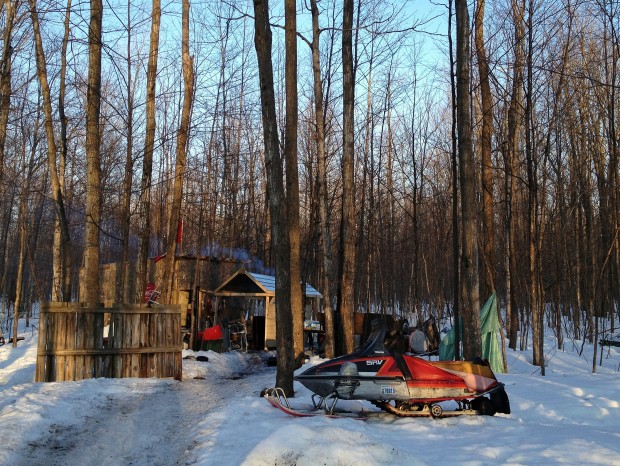
These facts are true of all maple syrup, whether organic or not.
6. Maple water from the trees at the beginning of the season has strong anti-oxidant properties, but later in the season, sap comes in to the mix, and these properties are diminished.
7. The faster you boil, the clearer your end product will be. The longer your maple water/sap is exposed to heat, the darker the end product will be. Ideally, you boil from near-frozen to syrup as quickly as you can.
8. If the syrup is canned at a too high or too low temperature, it will not “can” properly. Ideal is to have a vacuum in the can, so you should hear a sucking sound when piercing the can, similar to when you pry the lid off your homemade preserves in your Mason jars.
9. If the syrup is not properly filtered, it can develop “filaments”, which are simply a visual imperfection, but don’t affect taste. This will happen after about a year in the can.
10. Syrup in a can, if properly preserved, has a shelf life of about 4 years.
Maple Sausage Patties
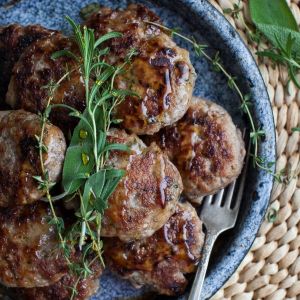
Maple Sausage Patties
Ingredients
- 2 pounds ground pork (not lean, about 20% fat)
- 2 Tablespoons pure maple syrup
- 2 teaspoons salt
- 1 teaspoon freshly ground black pepper
- 2 teaspoons minced fresh sage
- 1 teaspoon minced fresh thyme leaves
- 1/2 teaspoon minced fresh rosemary
- 2 Tablespoons bacon grease ghee, or fat of choice
Instructions
- Place the pork in a large bowl and pour the maple syrup on top. Sprinkle the the remaining ingredients on top, except the fat.
- Use your hands to gently mix everything together; be careful not to overwork the meat or it will be tough.
- For the pork into sixteen 2-inch patties, about 3/4-inch thick.
- Melt a tablespoon of the fat in a large cast iron skillet over medium-high heat. In two batches, cook the sausage patties for about 4 minutes on each side. They will get dark brown and feel firm when cooked through. Serve hot with additional maple syrup.
Nutrition
How do you like to cook with maple syrup?

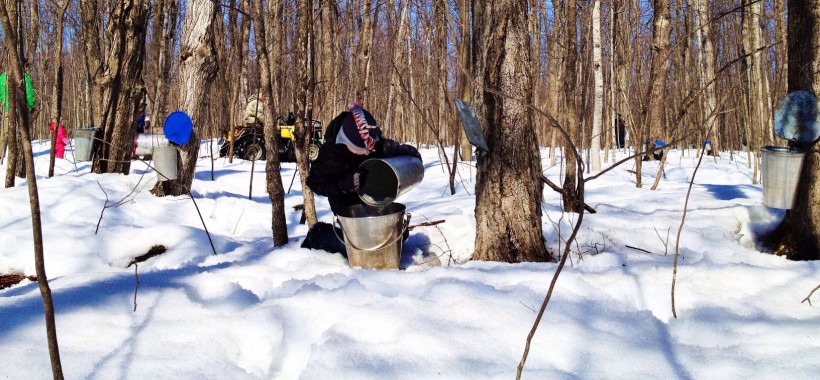

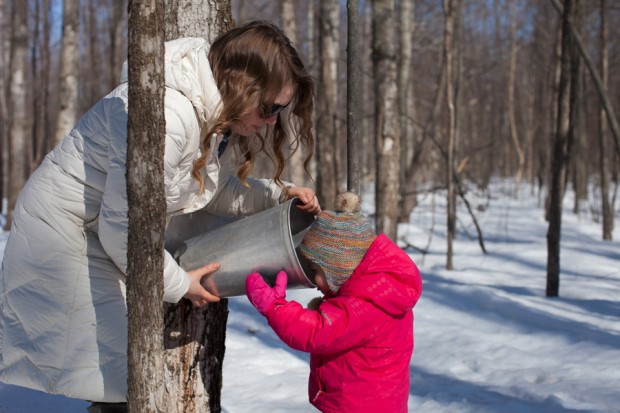
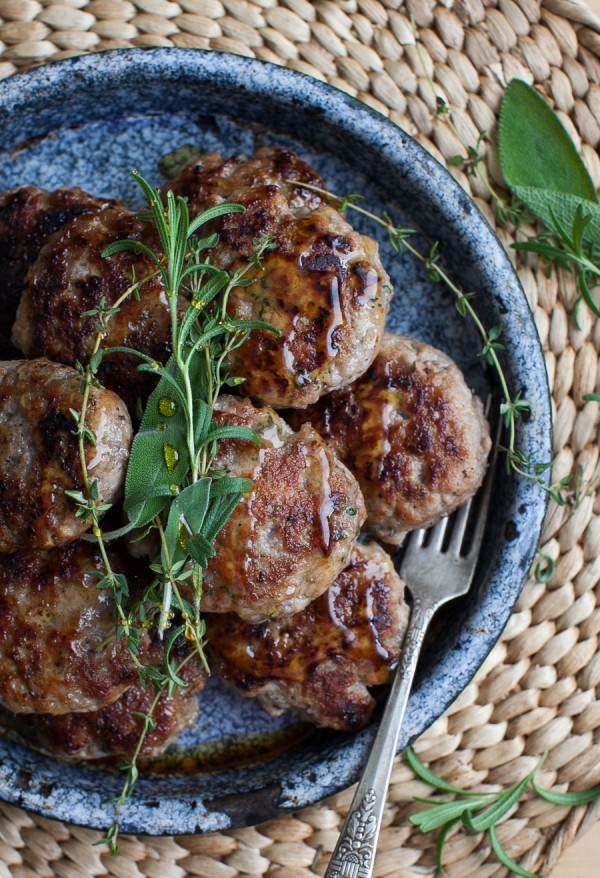
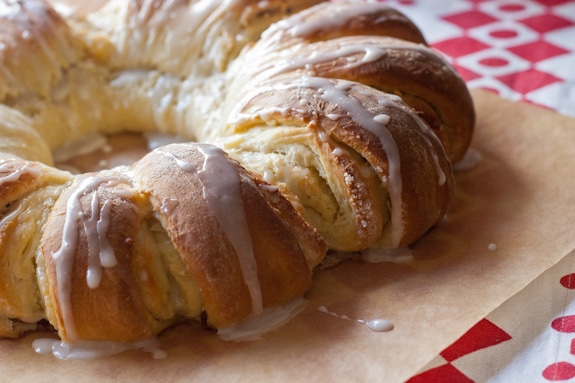
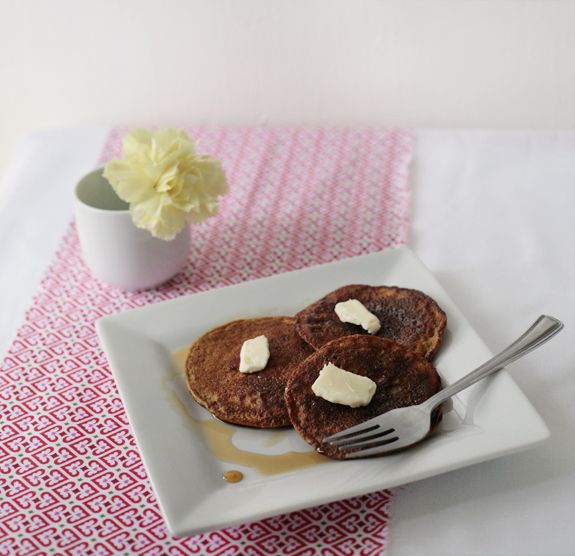
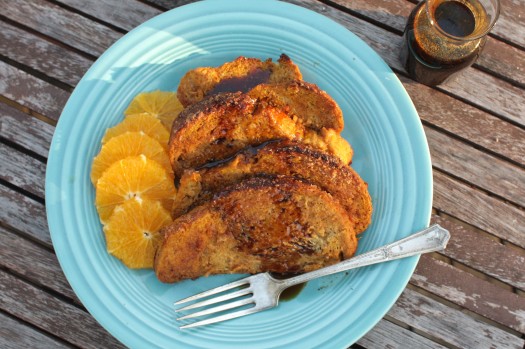
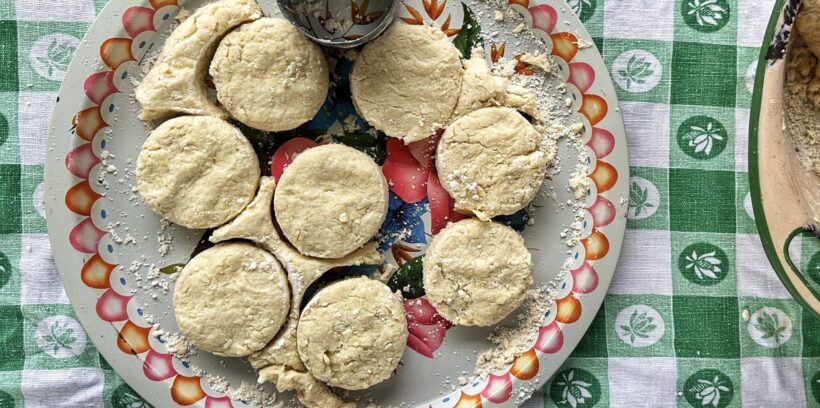
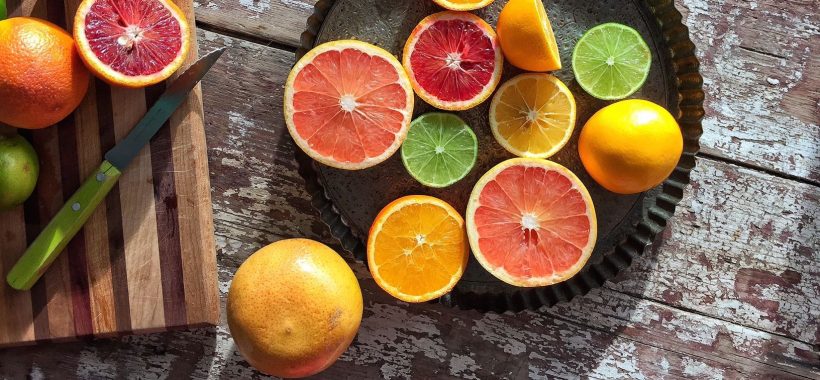
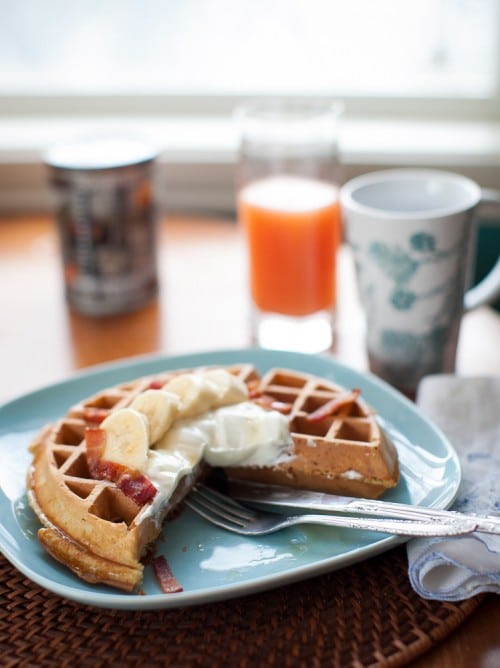
This was fascinating – I didn’t realize so much went into “just collecting sap” (my previous, ignorant perception of how maple syrup gets from Canada to my pantry!). And thanks for the homemade sausage recipe – already looking forward to surprising my family with that one very soon! 🙂
I just had to come back and report that these sausage patties are wonderful. I made them for Easter breakfast and everyone was still talking about them at dinner time! Thanks for another great recipe, Aimee!
1.) No one “dopes” the holes in the trees. In the 70s paraformaldehyde tablets were used, but this actually hurt the trees and it is now illegal. No sugarmakers are in the business of hurting trees.
2.) The North American Maple Sugar Producers Manual suggests 8′ DBH as a minimum for one tap when using health spouts. Trees still thrive at this (or even smaller sizes) when tapped appropriately. Organic standards vary from state to state and province to province, but VT standards allow one tap in a 9″ DBH tree. This was an arbitrary decision many years ago before new 5/16″ health spouts were developed.
3.) It is not just sugar that crystallizes on pans but rather sugar sand or niter. This is a mix of minerals and, acids salts (don’t think table salt but rather the chemical compounds composed of ions and anions) and some sugar. If it were only sugar, water would easily remove it. Organic standards do not limit what acid you can use (at least in VT) and most producers use phosphoric acid.
4.) Vermont organic standards do not limit how much you can concentrate using RO. However even at four fold concentration you have gotten rid of 75% of the water you need to.
5.) A double blind study conducted by UVM Proctor center found no correlation between flavor and concentration coming out of the RO.
6.) Maple water vs Maple Sap? What?
7.) Spot on. Though there are other factors that affect the color.
8.) Not sure about the too-hot canning, but too-cold can certainly cause the product to grow mold later (as can canning below density syrup).
9.) Perfect.
10.) The shelf-life of syrup in my house seems to be much lower… Cans always seem to be empty after about 1 month.
The recipe looks delicious… I’ll be trying it soon!
So neat! Thanks for sharing!
How fun is this post?! Love seeing you and your family in the snow!! Lovely recipe too!!
Love maple syrup and those maple sausage patties sound great!
Yum!! I wish I could do this where I live!! Those patties look AMAZING. One of my favorites to get at the store but I really need to make some at home!
My parents had the chance to help friends making maple syrup and told me it was hard work but so rewarding. I never had the chance to help because I was living in BC at the time. They always give me cans of syrup in the Spring. I do cook and bake all year long with maple syrup. I could not live without it. Great use of it in your patties.
I Love reading about this stuff- it is so cool that the kids are participating! Also, gorgeous homemade sausage.
ALL OF THIS!! I want to make homemade sausage & tap maple trees. Great post!
I love maple syrup and I am always looking for interesting ways to use it. Especially after such a long winter this should be great.
Lovely! I can’t wait to try this recipe. I love to bake with maple syrup. But I love love love sausage patties!
This was really informative! I’m in Ontario, so I am very familiar with the general idea of how maple syrup is made, BUT it was really cool reading about the ins and outs of organic production (I wondered what made one syrup organic and another not….). Thanks so much for the insight. And also, sausage + syrup = heaven.
Thank you so much for your writings on tapping trees. We did this for the first time this year, tapping 5 maple trees. My husband was pleasantly surprised with the quantity of syrup we got. Already making plans for next year, and changes too!
That sounds like an amazing start, Sarah! Good for you guys.
I have to admit I prefer the photo of your lil girl ‘nursing’ from the tree to drinking from the bucket, but besides that, boy do these sausage patties sound delicious!
Delicious! Thanks so much!!!